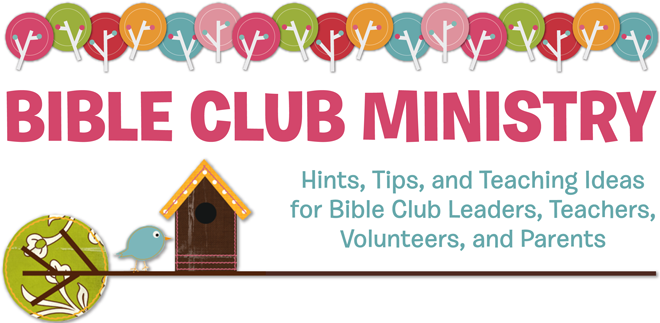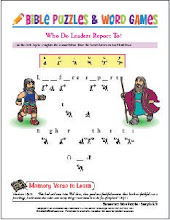Effective teaching with learning centers
In your preschool Bible Club classrooms, the place where the most in-depth and long-term learning will likely take place is in the learning centers. Learning centers are areas of your classroom that are the setting for a particular kind of activity (home living, block building, reading, looking at picture books, etc.) that teach or reinforce a biblical concept to the children.
The dramatic impact of learning centers on effectively teaching spiritual truths to twos and threes lies in the fact that the activities in the learning centers help to give meaning to Bible teachings through associating these teachings with everyday activities.
We can talk to the class about Jesus showing kindness to others and then pray, "Help us all to be kind this week," but many young children may not know what it means to be kind. The learning center approach is for children to work together in meaningful activities (playing with toys or blocks, pretending in the home living center, etc.) while guided by a teacher who labels and encourages acts of kindness and relates what the children are doing to what the Bible says about kindness.
However, effective teaching in learning centers happens only through the careful guidance of the leader or helper who guides the children's attention toward the lesson theme or biblical truth through "directed conversation." In directed conversation, the leader relates what the child is doing to the spiritual truth or biblical aim of the lesson. He or she is not simply watching or caring for the children while they build blocks or play in the home living area; the leader actively facilitates Bible learning in light of the children's activities. (This is one of the most important roles leaders and helpers play in your Honeybees classroom and the reason it is crucial that there is one adult leader or helper for each learning center each week.)Directed conversation is the key ingredient in making learning centers effective in your classroom. Combining words with actions in a relaxed climate greatly increases a child's ability to respond to Bible truths and also helps the child build positive attitudes about himself and others.3
Suggested learning centers
In Honeybees, three learning centers are suggested each week, and two are suggested each week for Cubby Bears. The same learning centers (with different activities each week) are used for four weeks at a time. Instructions are provided in the Leader's Guides for setting up the centers, supplies needed, and ideas for directed conversation to help fulfill the lesson aim. However, there are many more learning centers that may be used effectively, in addition, in your classroom.
Well-equipped rooms for Honeybees and Cubby Bears should definitely include a permanent Home Living Center, God's Wonderful World Center, and Art Center, as these form the basis for the learning centers suggested in Honeybees. Below are listed the basic furniture and supplies needed for these three centers.
• Home Living Center: This center should include a play sink, a stove, a refrigerator, doll dishes and pans, doll beds or cradle, a doll blanket, dolls, doll clothes, a child-size rocking chair, a small table, chairs, and a play telephone. Group materials to simulate a kitchen arrangement.
• God's Wonderful World Center: Based on the season, this center may include sprouting seeds, rocks, fresh flowers, colorful dead leaves, blossoms, pine cones, feathers, a magnifying glass, a bird’s nest, growing plants, a goldfish in a fishbowl, and seashells. Children may also make leaf collages, water plants, plant seeds, or make a bird feeder.
• Art Center: This center should have low tables where the children can sit plus a heavy-washable drop cloth to provide work space. Basic art supplies include crayons, felt tip markers, glue sticks, glue, scissors, and construction paper.
Optional learning centers
The following additional, optional centers may be provided, either permanently or temporarily, if space and finances allow. (Children feel more secure if they see the same learning centers week after week, so do not feel you must constantly change your learning centers; this is the reason each learning center in Honeybees is used for a minimum of one unit before being changed.)
• Worship Center: This center should include a picture of Jesus, a picture of Jesus with children, a Bible (preferably with colorful pictures) that the children can touch and hold, and a picture of a church building. All items should be arranged attractively on a small, low table.
• Book Nook: This center should include picture books (Christian stories or Bible stories only), a Bible, a photo album showing families together, "touch and feel" books, and places to sit comfortably.
• Puzzle Center: This center should include simple wooden-type puzzles (no more than 12 pieces in each for your twos and threes) and low tables and chairs where the children can sit to work on their puzzles. The center may also include the wooden, three-dimensional puzzles of cars, trucks, and animal shapes. (If necessary, children can work on puzzles on the floor rather than on tables.)
• Block Center: This center should include assorted sizes and shapes of plastic, wooden, or cardboard blocks and toy cars and trucks.





